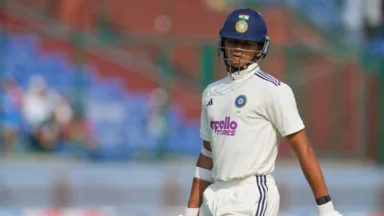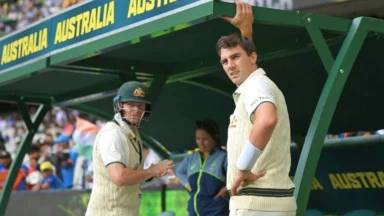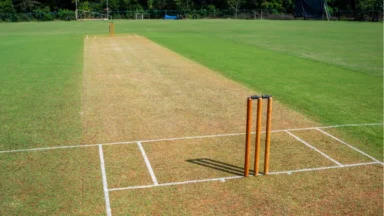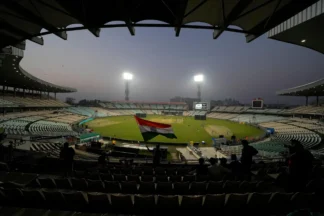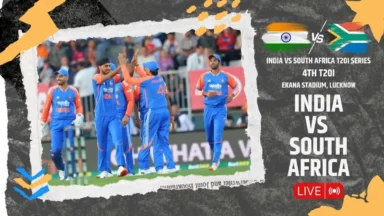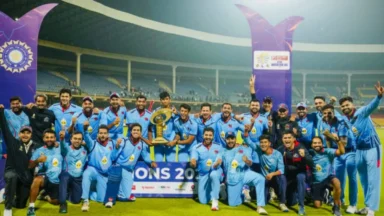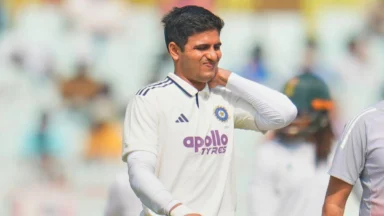When India’s women’s cricket team reached the final of the Women’s T20 World Cup 2020, everyone was ecstatic. The MCG was packed to the gills, and the match was touted as one of the biggest in women’s sports history. Unfortunately for India, the greatest women’s team ever, Australia, battered them. It hurt, but knowing the juggernaut Aussies were way too good at home, Indian fans made peace.
In six prior editions, Team India hadn’t made it past the group stage thrice, so everyone accepted the outcome. That day, everyone thought this was only the beginning. Soon enough, the Indian women’s team was going to get over the hurdle, and just the men’s team was going to dominate world cricket. Well, four years have passed, and not much has changed.
Yesterday, they were knocked out of the Women’s T20 World Cup 2024. The story remained the same. They beat the sides they should have (Sri Lanka and Pakistan) but fell to teams that offered resistance (New Zealand and Australia). Everyone plays bad once in a while and loses, but how you change yourself for the better after that is what defines you. With Harmanpreet Kaur’s Indian team, there seems to be no improvement.
No improvement in batting
Shafali Verma’s mode of dismissal hasn’t changed since she made her debut in 2019. A couple of big hits, no strike rotation, and then hit one to the fielder after either getting stuck in the middle or failing to read the situation. Vice-captain Smriti Mandhana has been playing for over a decade now, yet against an Australian side that didn’t even have their captain Alyssa Healy, the southpaw looked like a fish out of order. She started as if India were chasing 80 runs instead of 152. She’d faced two overs and scored just 6 runs by the time was trapped in front by Sophie Molineux. What’s the use of having so much experience when you aren’t even sure how to go about the chase?
A ‘close’ match labelled people because of Harmanpreet Kaur‘s knock of 54 (47). But Team India were behind the curve after the third over in the chase. Much of the blame fell upon the Indian captain. Sure, she was the only half-centurion in the match, but after facing 25 balls, she’d scored just 19 runs. The chase shouldn’t have gotten so close had Harmanpreet been batting at even a strike rate of 100. However, the worst mistake came in the end. In the last over of the match, she decided that with 13 runs needed off 3 balls, Shreyanka Patil should take the strike. India wouldn’t have probably won anyone, but she took away what little chance they had by standing at the non-striker’s end.
Woeful catching & fielding
Skills can’t alone take you far. The landscape of cricket has changed so quickly in the last few years that Team India seems to be lagging behind other nations due to their fitness and fielding. Such were the conditions in Dubai and Sharjah that boundaries weren’t coming. So, teams like New Zealand and Australia made sure they ran like their lives depended on it.
Running between the wickets seems to be a major issue. While no one seems to be that great at it, Richa Ghosh and Deepti Sharma seem to be the ones who struggle the most. Richa even ran herself out against Australia. But it’s the catching and fielding that’s even more woeful. In almost every lost match in the last couple of years, you can find two to three instances of dropped catches, and misfields are so common that they don’t even register now. Everyone from the wicketkeeper to the captain seems to be dropping dolly’s. These two issues have been talked about for a while, and one can’t really find any sign of improvement.
Ever heard of planning?
Before the Women’s T20 World Cup started, it wasn’t sure who was India’s No. 3 batter. And after the tournament’s over, we’re still not sure. In two matches, Harmanpreet Kaur batted at 3, and in the remaining Jemimah Rodrigues came at the spot. What sort of planning is that? Moreover, in each game, Team India went with just five frontline batters. The highest score by players from 6-11 was Pooja Vastrakar’s 6-ball 9 against Australia. How can the batters attack if they fear a collapse? S Sajana played in two matches as Vastrakar’s injury replacement, and she faced one ball and bowled no deliveries. You couldn’t have Yastika Bhatia try at 3 to not only prolong the batting but also ensure everyone gets to bat where they prefer and then have five bowling options.
How can you expect to go toe-to-toe with Australia, New Zealand, South Africa, West Indies and England if you aren’t even sure that’s your best and most balanced XI? In some way, it’s good that India didn’t qualify for the semifinals because this might be the jolt that they need to wake up and realise that they are falling behind. It’s they don’t get their act together; those consistent semifinal and final runs might dry up, and Australia will continue to win trophies.
Editor's Pick
 Cricket
Yashasvi Jaiswal could miss few Vijay Hazare Trophy matches, lost 2 kilos due to food poisoning
Cricket
Yashasvi Jaiswal could miss few Vijay Hazare Trophy matches, lost 2 kilos due to food poisoning


